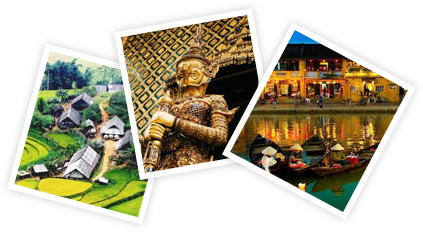Vietnam is home to some of the world’s most unique shopping experiences in its floating markets. For those looking to explore the culture and traditions of the Southeast Asian country, a visit to one of these markets should be top of the list.
This guide will provide you with all the information you need about famous floating markets in Mekong Delta, Vietnam – from their locations, opening times, goods sold and tips on how to get around. With this knowledge, you’ll be able to make the most out of your shopping experience in Vietnam’s unique floating markets.
What are Floating Markets and What Makes Them Special in Vietnam?
Floating markets are a unique and traditional shopping experience in Vietnam. These markets are held on the banks of rivers or canals, and vendors sell their goods from boats. All of these make them an interesting sight to behold.
This unique form of market has been around for centuries. That’s why coming here you can feel the authentic Western Vietnamese experience. Not only do they provide a unique shopping experience, but they also serve as a reminder of the country’s rich culture and history.
The traditional floating markets of Vietnam are full of vibrant colors, sounds, smells and flavors. From fresh fruits, vegetables to handmade souvenirs, these markets offer a variety of products that can be found nowhere else in the world.
5 Best Floating Markets in Vietnam
Vietnam is home to some of the most amazing floating markets in the world, offering a unique shopping experience and authentic local exploration. Here are 5 floating markets that I recommend you should visit, from the hidden to the well-known ones.
Long Xuyen Floating Market
This floating Market is a hidden gem within the Mekong Delta. What sets this market apart from others is its distinctive local charm and authentic trading atmosphere. Unlike larger and more touristy markets, Long Xuyen offers an intimate and immersive experience, allowing you to witness the daily lives of locals as they trade goods from their boats.
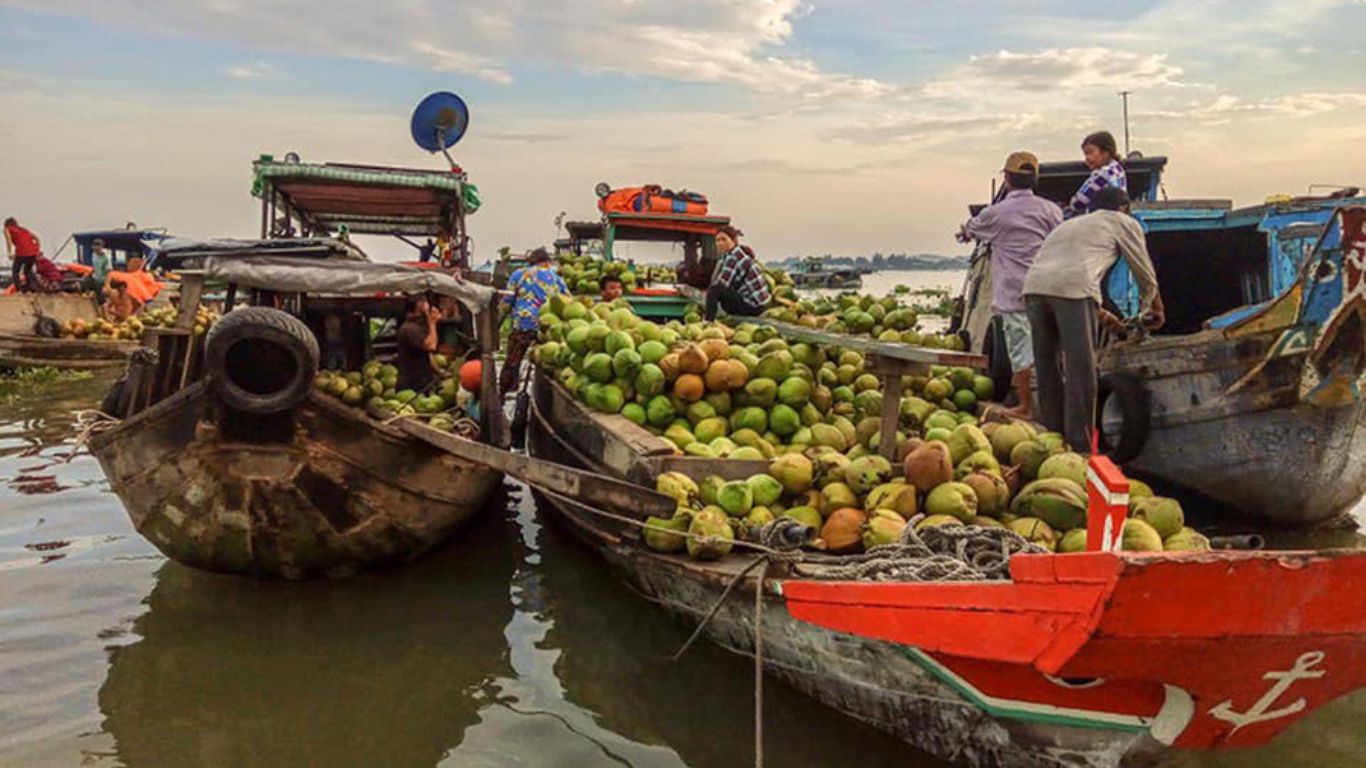
The market showcases a vibrant array of fresh produce, exotic fruits, and local specialties, giving you a taste of the region’s agricultural bounty. Engage in friendly conversations with the vendors, learn about their traditions, and sample delicious street food prepared right before your eyes.
Beyond the market itself, Long Xuyen’s location along the Hau River provides stunning views and the opportunity to explore the surrounding waterways, dotted with lush greenery and traditional stilt houses.
To reach Long Xuyen Floating Market, you can take a car or bus from Ho Chi Minh City or opt for a tour from Can Tho, it will take around one and a half hours.
What to see near Long Xuyen Floating Market?
Near Long Xuyen Floating Market, there are some unique attractions that you can enjoy. Here are a few notable ones:
- Ong Ho Island (Tiger Island): Located just a short boat ride away from the floating market, this place is known for its tranquil beauty and lush green landscapes. You can explore the island’s fruit orchards, relax in the shade of coconut trees, and experience the local way of life.
- Sam Mountain: While not directly adjacent to the floating market, Sam Mountain is a popular attraction in the vicinity. It offers stunning panoramic views of the Mekong Delta and is home to several pagodas and temples, including the famous Ba Chua Xu Temple or Hang Pagoda.
- Chau Doc Town: Just a short distance from Long Xuyen, this town features diverse cultural influences, including a significant Cham minority community.
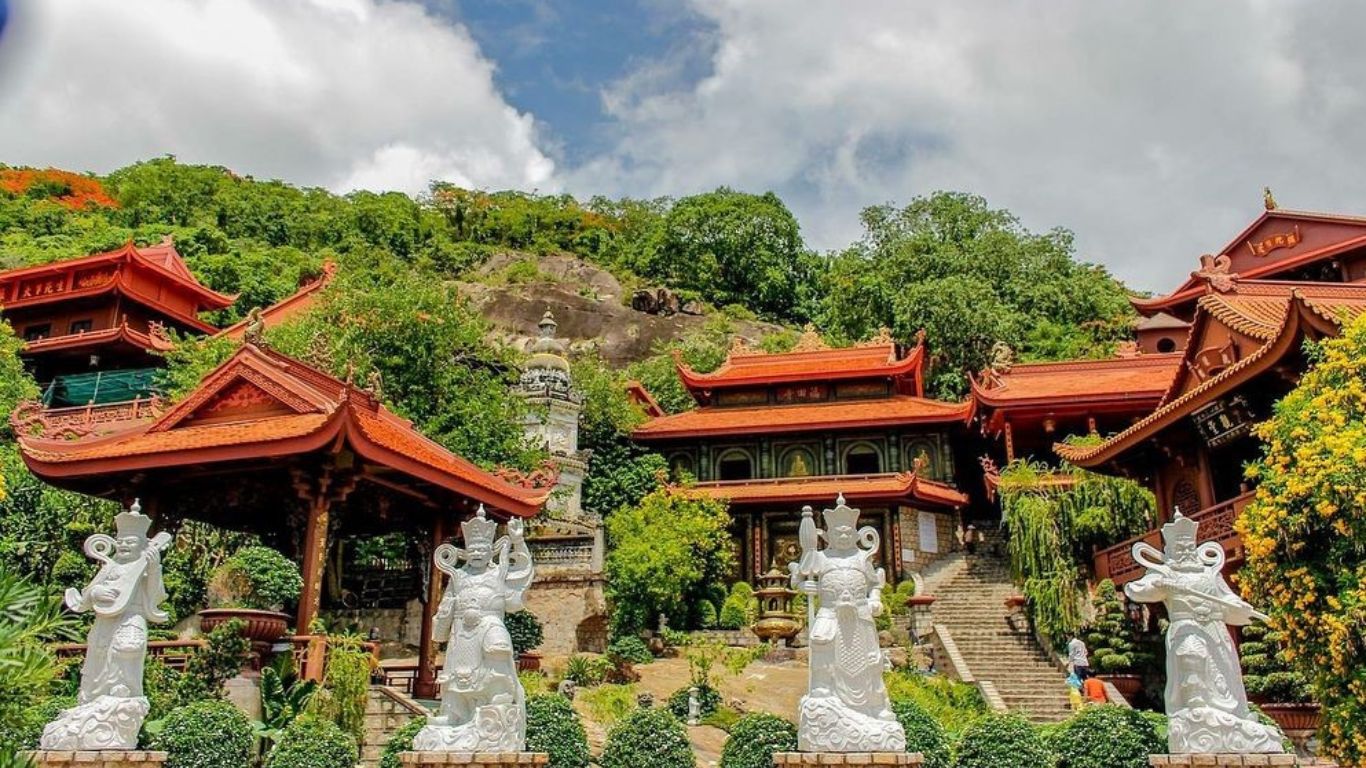
Phong Dien Floating Market
We would like to advise you to visit Phong Dien Floating Market if you are not a huge fan of touristy regions. It’s located 20 kilometers southwest of Can Tho.
To get to the floating market, you can take by boat or sampan. People here mostly sell fish, veggies, and coconuts and fresh fruits. You can know what they have in stock by spotting what is hanging from the poles.
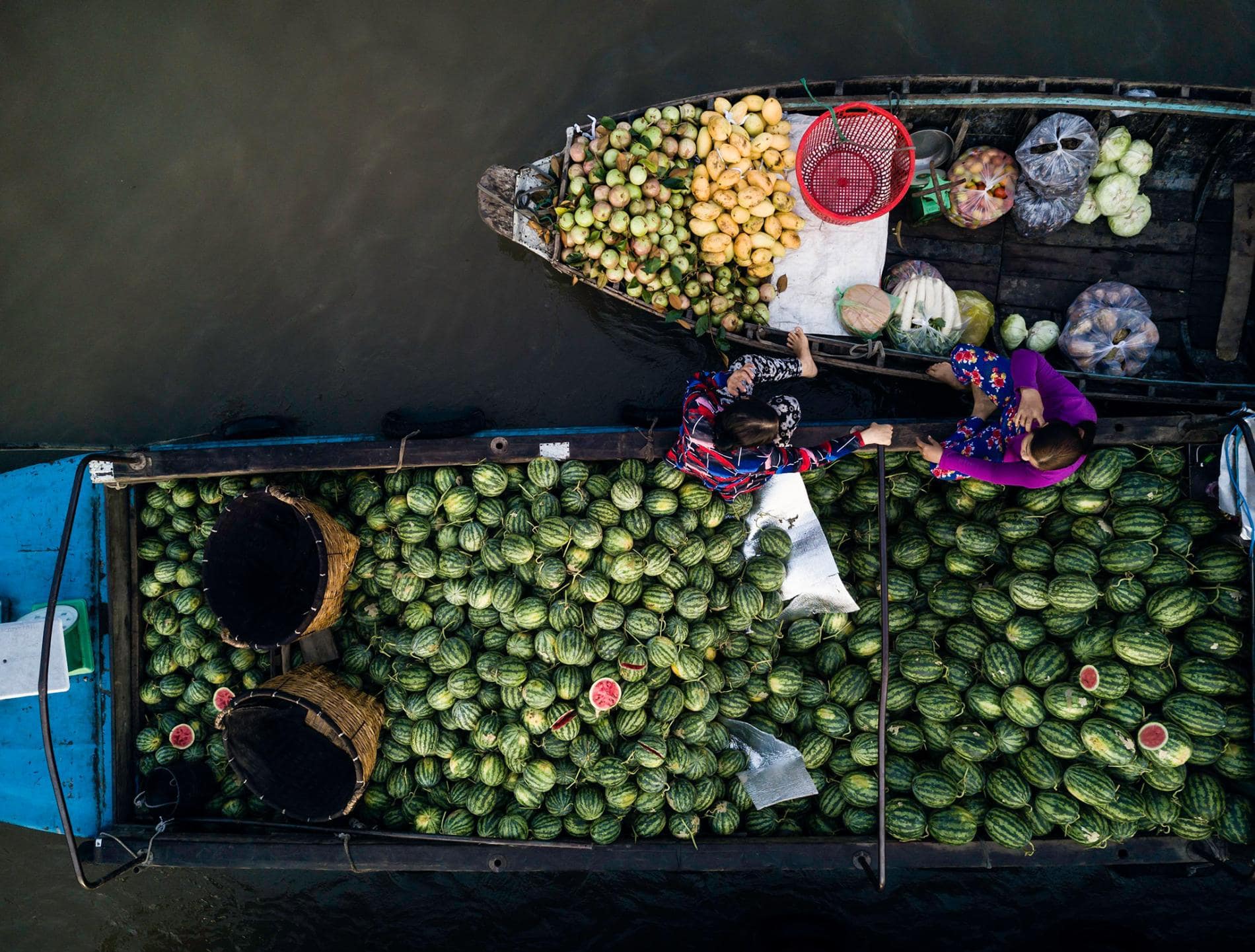
When entering this market, you can see floating markets little canals, a factory that makes rice noodles, sweets stuffs, etc. This market is smaller than Cai Rang Floating Market but more genuine, and it’s a stunning place to take pictures because the morning light is so gorgeous.
Tips: The best time to visit is from 5:00 to 6:30 in the morning. It’s the busiest time of the market so you can one side enjoy the sunrise and ones experience the real daily life of locals.
Cai Rang Floating Market
When you visit the Cai Rang floating market in Can Tho, you’ll be astounded by how crowded and active it is. The river turns into a maze of hundreds of boats loaded with fruit like pineapple, papaya, mango, and bananas as well as illicit items like cigarettes.
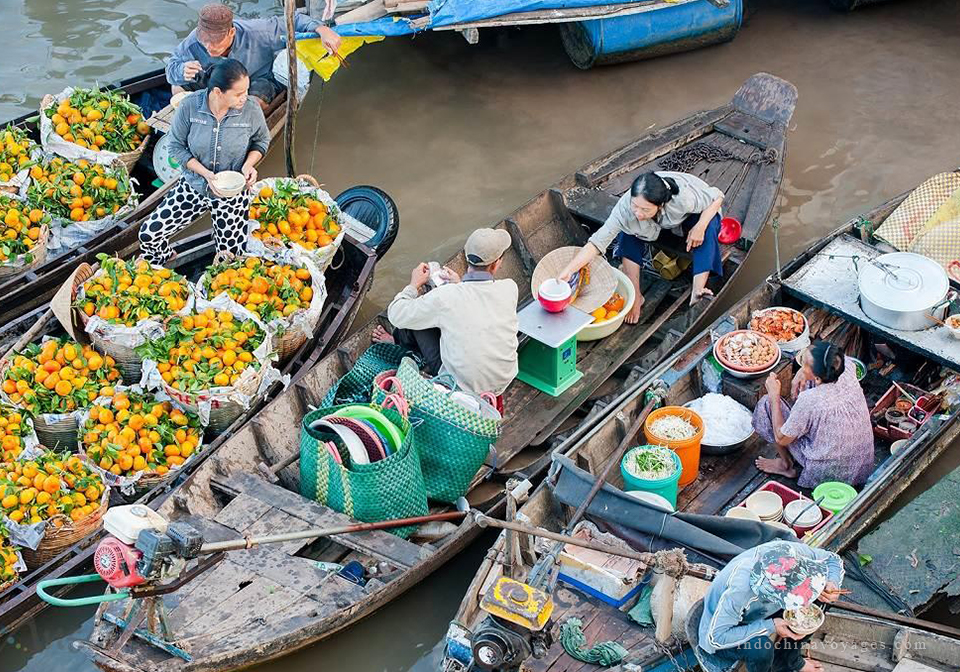
To serve market-goers and guests, small boats offer beer, wine, and soft beverages weave in and out of the other boats. Every boat is packed with seasonal items, from fresh fruits to vegetables. You can learn more about the culture of Vietnamese people in western while participating in market activities.
Soft reminder: Because Cai Rang market is the largest and also one of the most famous floating markets in the Mekong Delta, so you can find lots of tourists. But it doesn’t mean it’s not worth visiting. Coming here, you can sense the vibe of the watery area as well as local life. Besides that, it’s also easy to access if you have limited travel time in Vietnam.
What to see around?
After visit Cai Rang Market, you should visit a noodle factory to observe and participate in the many activities of the factory. Every stage will be explained to you so you can know how the rice noodles are made in a very traditional way.
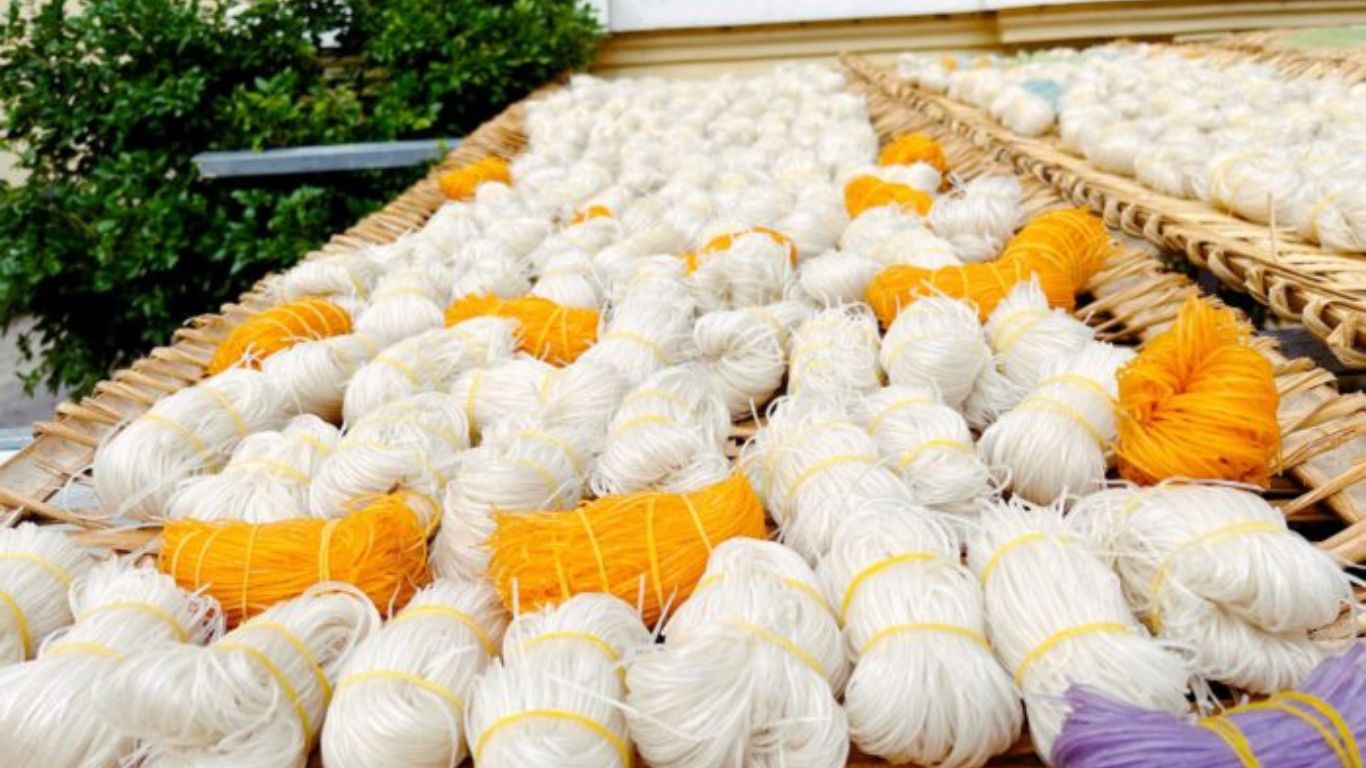
Then you can take a short and orientated city tour with visiting to the Zihuang Pagoda (Chua Ong). This enchanting pagoda offers a unique opportunity to immerse yourself in the rich cultural tapestry of Vietnam, particularly the Mekong Delta locals.
Nga Nam Floating Market
Nga Nam Floating Market is located at the intersection of five rivers going to Ca Mau, Vinh Quoi, Long My, Thanh Tri, and Phung Hiep.
How is Nga Nam different from Cai Rang Floating Market?
Unlike Cai Rang market, which specializes in wholesale agricultural products, Nga Nam market retails agricultural products.
Instead of hanging what they sell from a wood pole vertically like other floating markets, Nga Nam market are placed horizontally, so all kinds of colorful fruits look very eye-catching.
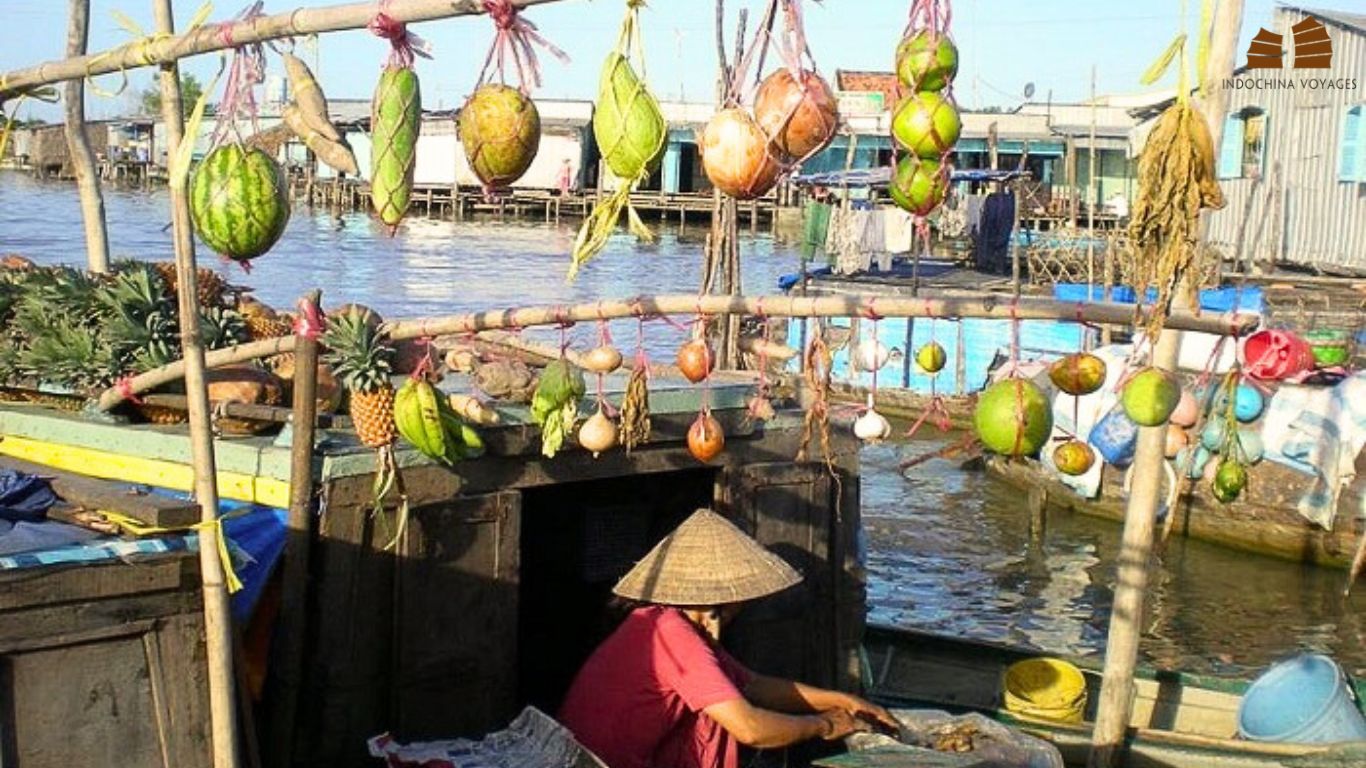
Helpful tip: The market opens in the early morning (3 am – 4 am) to 8 am, so for convenience, you should spend the night at Nga Nam on some Mekong cruises.
Cai Be Floating Market
The Cai Be floating market, located in Tien Giang province, serves as a center for shipping agricultural products and seafood from the Mekong to other parts of Vietnam. Although it seems chaotic, everyone is aware of what to do. Seeing this amazing riverboat market is a fantastic photo opportunity.
Moreover, the local life is intriguing for those who want to learn about the culture of Southern Vietnam. I believe the stilt homes along the river are more interesting to you.
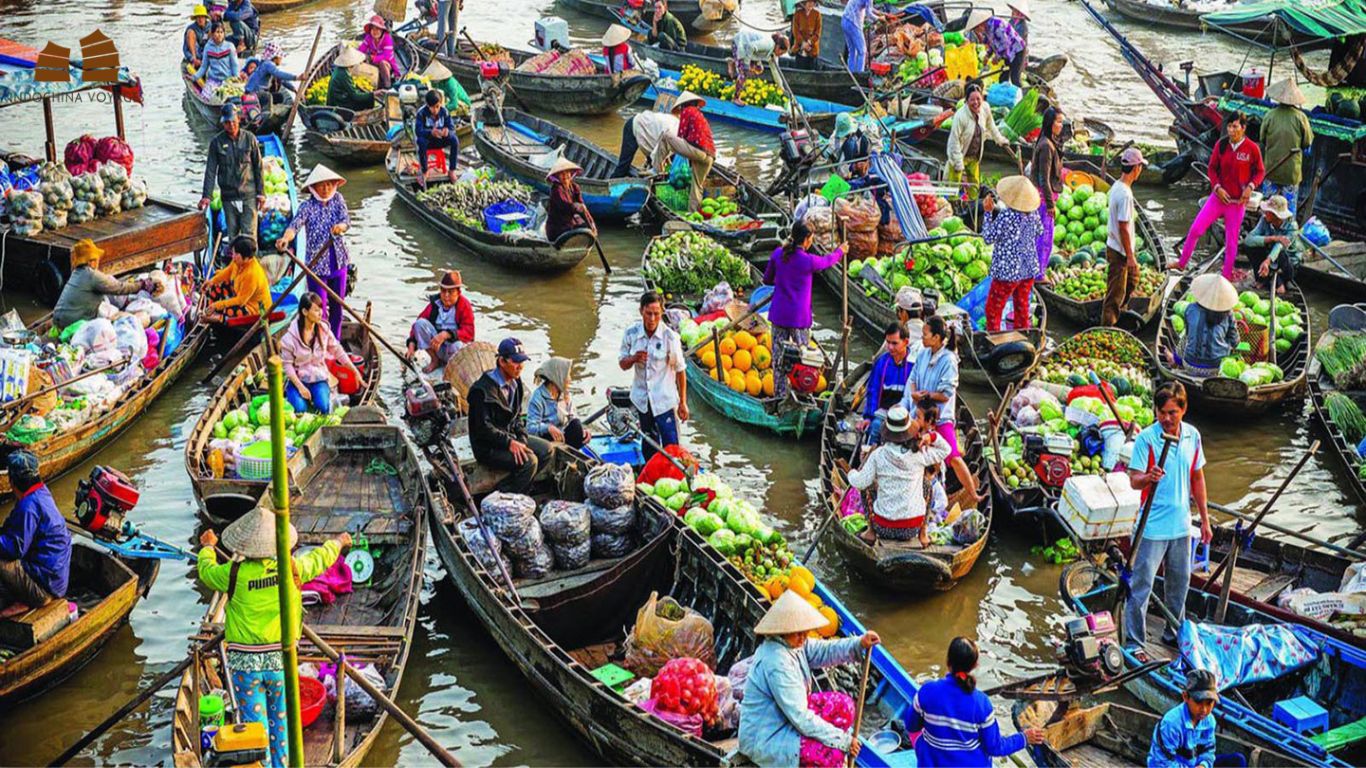
It is another ideal option for you because this is the closest floating market to Ho Chi Minh City. Joining a private/group trip or taking a taxi from Ho Chi Minh City are the best ways to get here. Either you can take a bus to My Tho, then another to Cai Be, or do both.
Insider note: Since the floating market is open later than others, you may visit late in the day and still enjoy a vibrant scene.
Beyond the floating markets, if you are looking for more authentic experiences, let’s take a look at our blogs about 10+ Unique Things To Do in Mekong Delta & Tips to beat the crowd.
Tips for Navigating & Bargaining at a Floating Market
Bargaining at a floating market in Vietnam can be intimidating for many travelers. However, with these right tips and tricks, you can ensure that your shopping experience is not only enjoyable but also cost-effective.
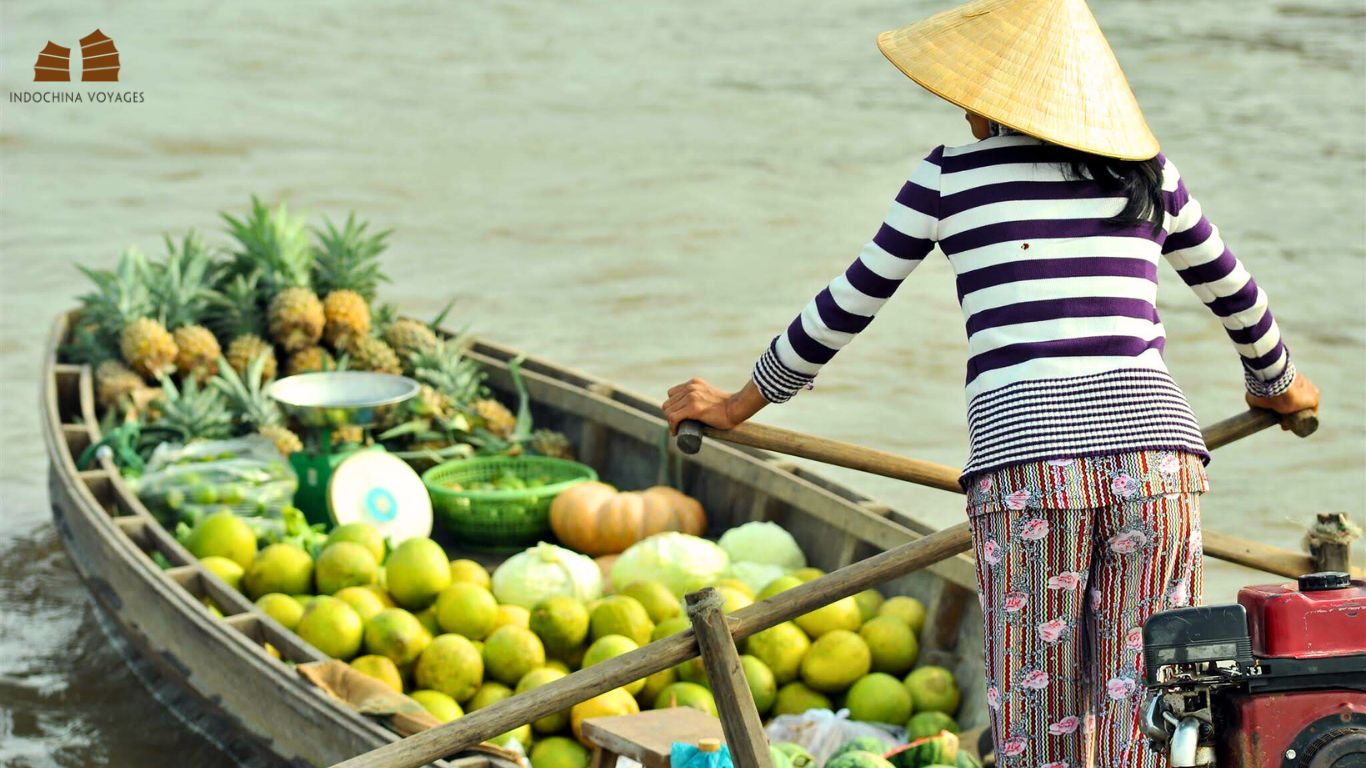
Make sure you bargain your way down from the price that was initially offered to you for an item but watch out for going too far. Locals benefit from bartering to keep prices steady, but excessive haggling may be regarded as an attempt to mislead a vendor out of $1 that may be worth far more to them than it does to you. Find the proper balance, make use of your guide’s assistance, and enjoy yourself!
The Essential Must-Try Foods When Exploring Vietnam’s Floating Markets
The sights, smells and sounds of these bustling markets are sure to be an unforgettable experience. However, the real highlight of these markets is the food! Banh xeo, banh cong and xoi ga are must-try dishes that you should definitely sample when exploring Vietnam’s floating markets.
Banh xeo is a savory crepe made with rice flour, turmeric and filled with pork, shrimp and bean sprouts. Banh cong is a crispy snack made from shrimp paste wrapped in sesame dough. Xoi ga is a sticky rice dish served with chicken or pork and topped with fried shallots for added flavor. These delicious dishes represent the best of Vietnamese cuisine and will leave you wanting more!
If you want to have a lifetime experience by exploring floating markets, learn the local life and enjoy slow travel, here are our highly recommended Mekong Delta tours or you can email us via info.indochinavoyages.com to get your customized itinerary.







